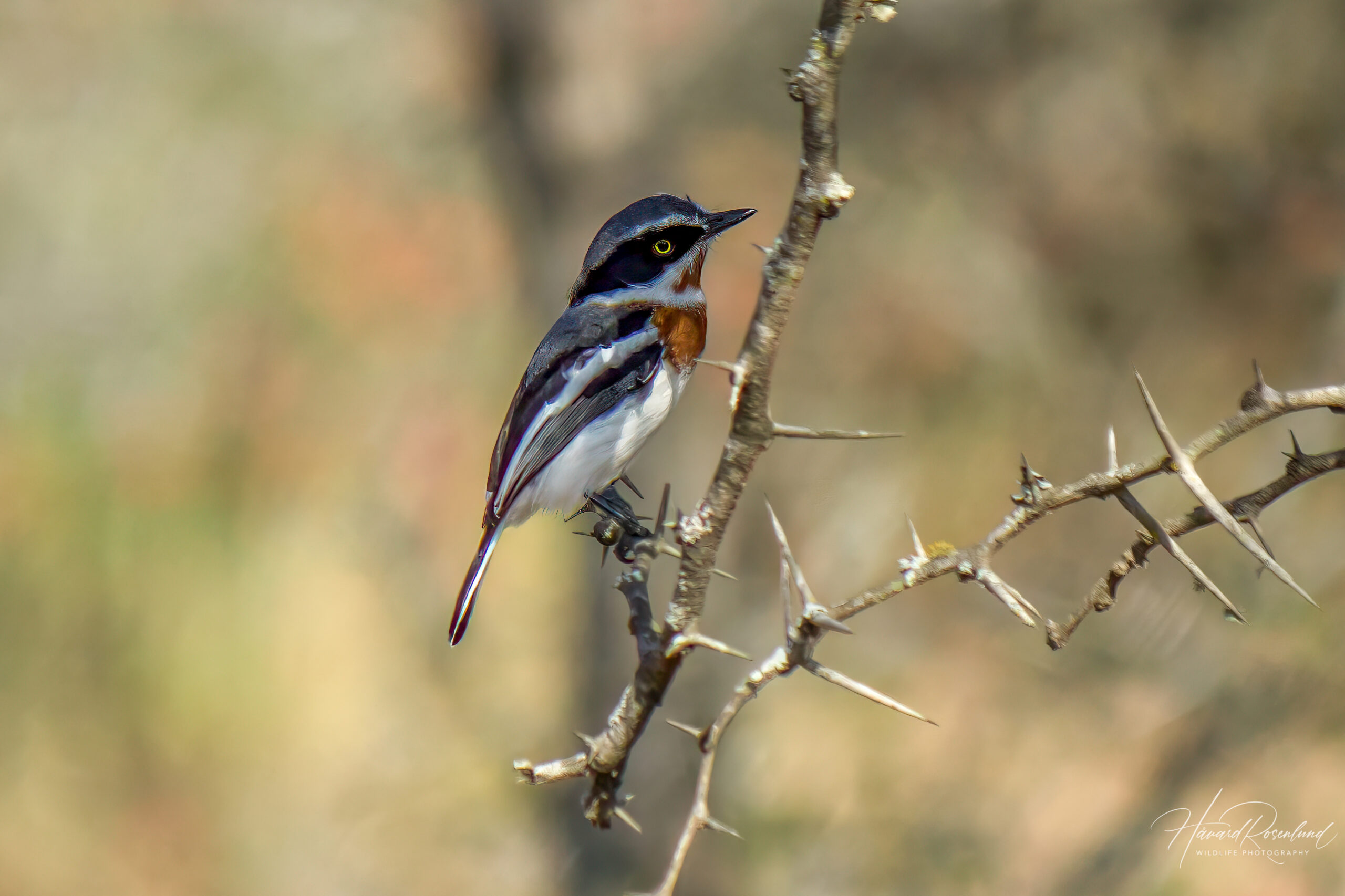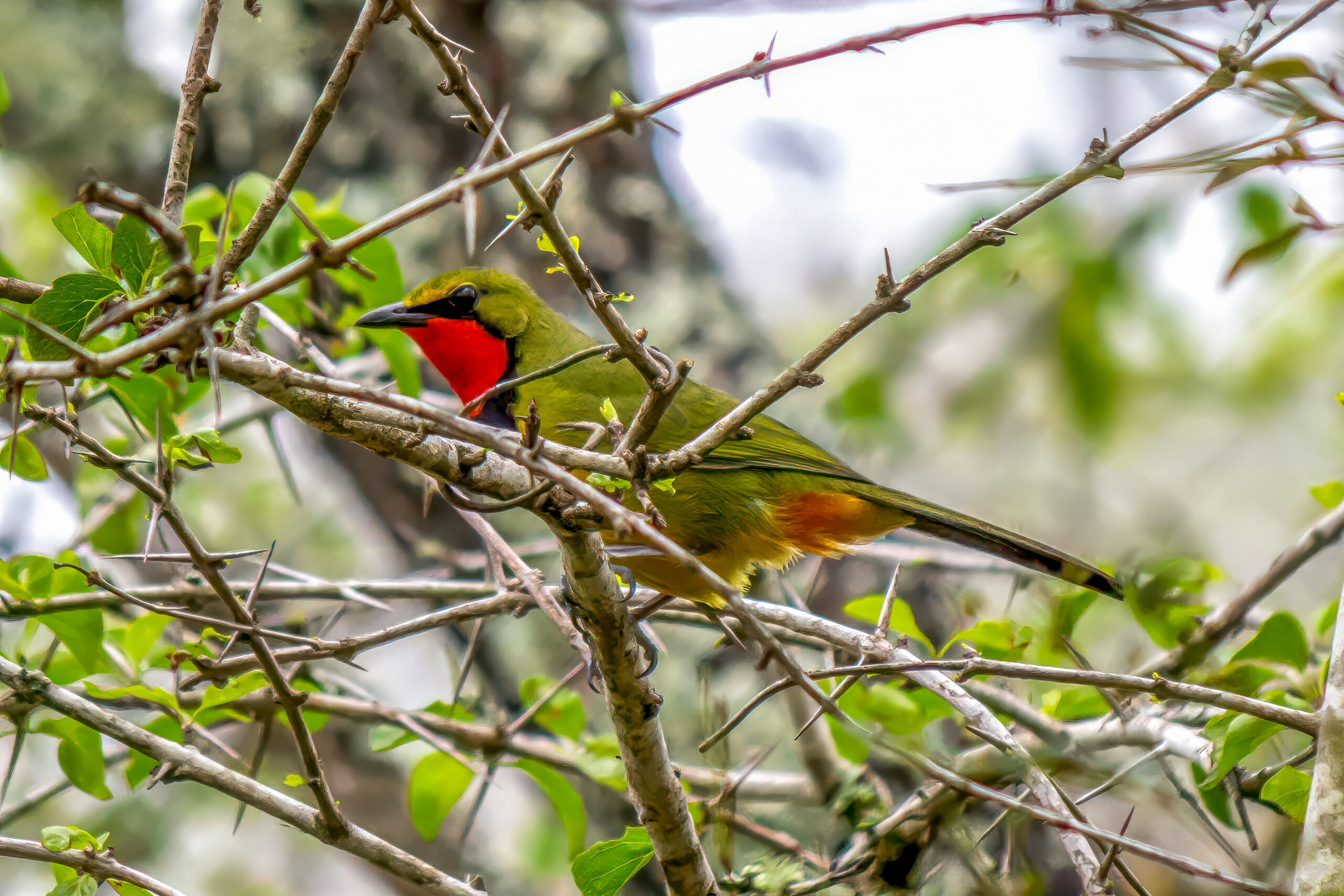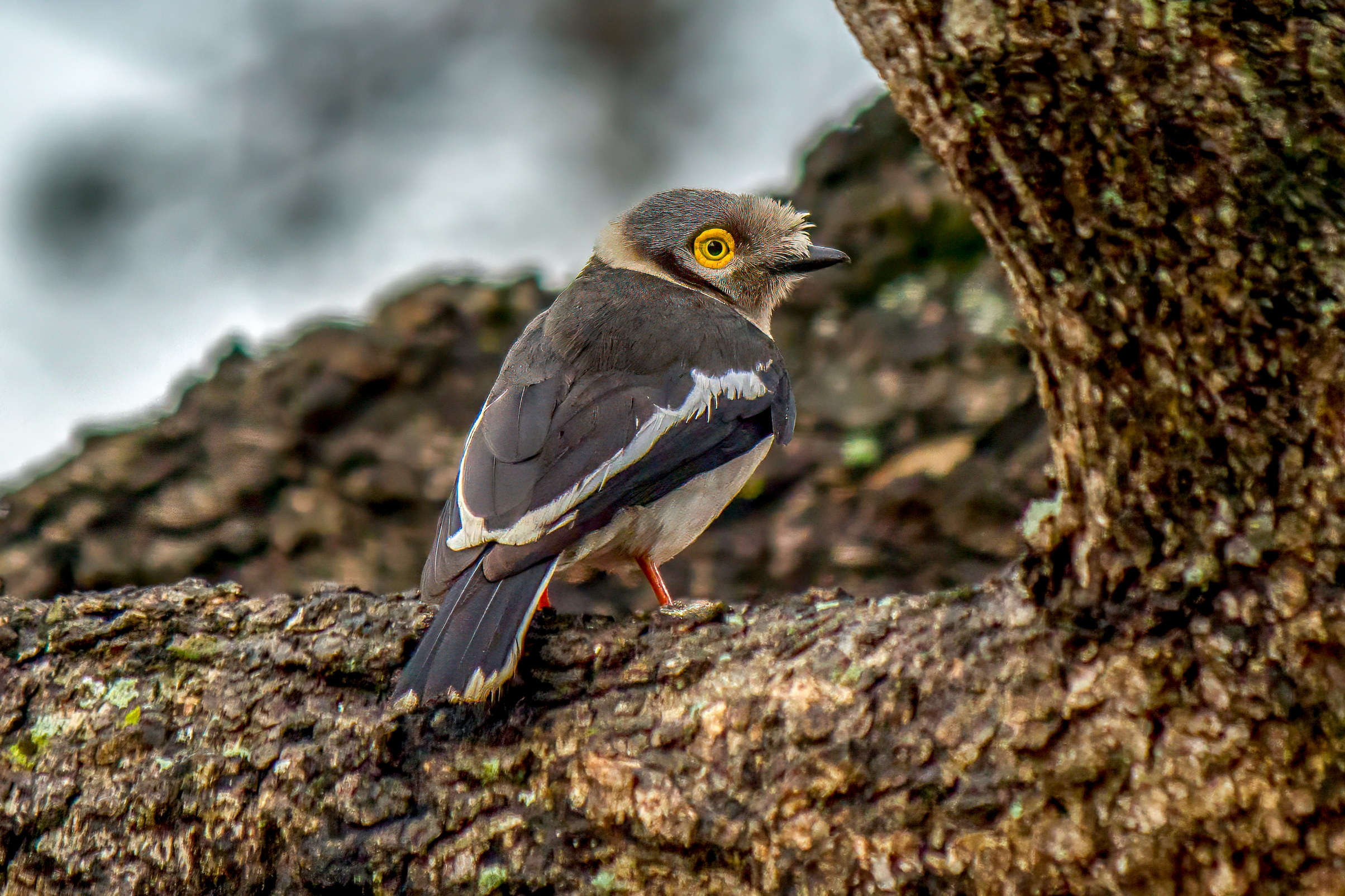Description
The chinspot batis (Batis molitor) is a small passerine bird found in the woodlands and savannas of sub-Saharan Africa, with most of its range south of the equator. It measures about 12-13 cm (4.7-5.1 in) in length, making it a relatively small bird within its family. The species exhibits sexual dimorphism. Both sexes display a black, white and grey plumage, but males have a wide black band across the chest and a pure white throat, whereas the female has a chestnut band across the chest and a chestnut spot on the throat.
Diet & habitat
Chinspot batises are primarily insectivorous, feeding on a variety of insects and spiders. They employ an active foraging technique, often seen flitting through the lower canopy or undergrowth in search of prey. Their habitat includes a range of woodland types, from dense forests to more open savanna woodlands, often near water sources. Their adaptability to different types of woodlands contributes to their widespread presence across their range.
Nesting
The breeding season of the chinspot batis varies geographically but generally coincides with the wet season, which provides abundant food resources. It is known for its distinctive duet singing, particularly during the breeding season. The male and female engage in a complex call-and-response song, which is integral to their pair bonding and territorial behaviors. Both parents participate in nest building, which is a small, cup-shaped structure hidden among foliage. The female lays 2-3 eggs, and both parents share in incubation duties, which lasts about two weeks. Fledging occurs approximately three weeks after hatching, with the juveniles remaining dependent on the parents for some time before achieving full independence.
Status
The chinspot batis benefits from its wide range and general adaptability to different habitats, including those altered by human activities. The population is stable and it is listed as least concern on the IUCN Red List.







